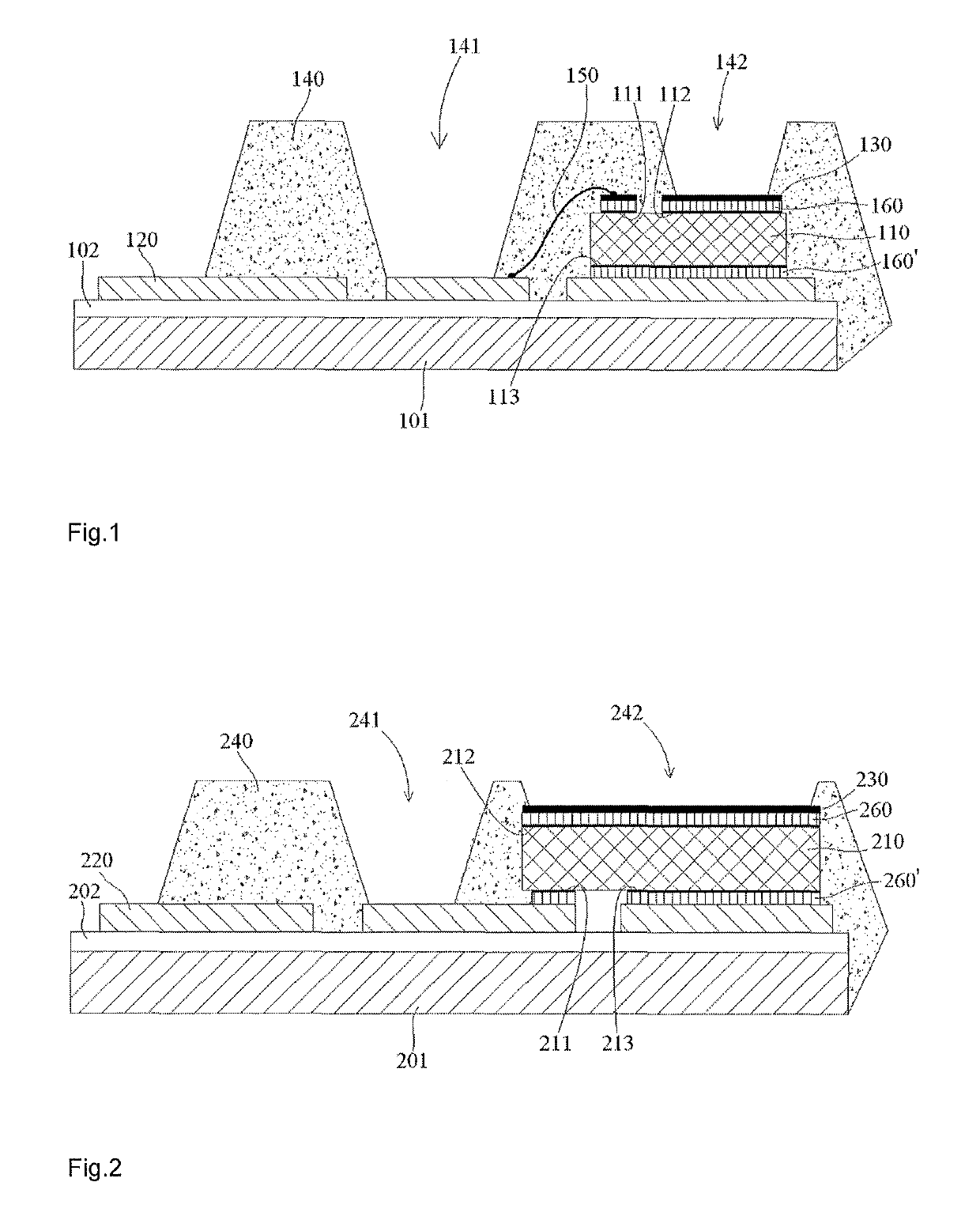Power semiconductor module
a technology of semiconductor modules and semiconductors, applied in semiconductor devices, semiconductor/solid-state device details, electrical apparatus, etc., can solve the problems of limiting the thermal or thermodynamic capability of the semiconductor, the force is not directly normal to the interface between the semiconductor and the cooled surface, and the relative large volume of the housing, so as to achieve the effect of simple production of such modules and high yield in the mounting of sub-assemblies
- Summary
- Abstract
- Description
- Claims
- Application Information
AI Technical Summary
Benefits of technology
Problems solved by technology
Method used
Image
Examples
first embodiment
[0042]FIG. 1 is an illustrative cross section view of a power semiconductor module according to a first exemplary embodiment of the present invention.
[0043]In an embodiment of the present invention, a power semiconductor module is disclosed. As shown in FIG. 1, the power semiconductor module mainly comprises a substrate 120, a semiconductor 110 and a package 140.
[0044]As shown in FIG. 1, the semiconductor 110 is provided on a top side of the substrate 120. The package 140 is formed on the semiconductor 110 and the substrate 120. As shown in FIG. 1, the package 140 has openings 141, 142 formed therein at a top side thereof, through which terminal contacts of the semiconductor 110 and the substrate 120 are exposed outside and accessible from outside. The terminal contacts of the semiconductor 110 and the substrate 120 that are exposed outside and accessible from outside may be pressure-contacted with a printed circuit board by, for example, pressure-contact springs.
[0045]In an exempla...
second embodiment
[0057]FIG. 2 is an illustrative cross section view of a power semiconductor module according to a second exemplary embodiment of the present invention.
[0058]In an embodiment of the present invention, a power semiconductor module is disclosed. As shown in FIG. 2, the power semiconductor module mainly comprises a substrate 220, a semiconductor 210 and a package 240.
[0059]As shown in FIG. 2, the semiconductor 210 is provided on a top side of the substrate 220. The package 240 is formed on the semiconductor 210 and the substrate 220. As shown in FIG. 2, the package 240 has openings 241, 242 formed therein at a top side thereof, through which terminal contacts of the semiconductor 210 and the substrate 220 are exposed outside and accessible from outside. The terminal contacts of the semiconductor 210 and the substrate 220 that are exposed outside and accessible from outside may be pressure-contacted with a printed circuit board by, for example, pressure-contact springs.
[0060]In an exempl...
PUM
 Login to View More
Login to View More Abstract
Description
Claims
Application Information
 Login to View More
Login to View More - R&D
- Intellectual Property
- Life Sciences
- Materials
- Tech Scout
- Unparalleled Data Quality
- Higher Quality Content
- 60% Fewer Hallucinations
Browse by: Latest US Patents, China's latest patents, Technical Efficacy Thesaurus, Application Domain, Technology Topic, Popular Technical Reports.
© 2025 PatSnap. All rights reserved.Legal|Privacy policy|Modern Slavery Act Transparency Statement|Sitemap|About US| Contact US: help@patsnap.com

